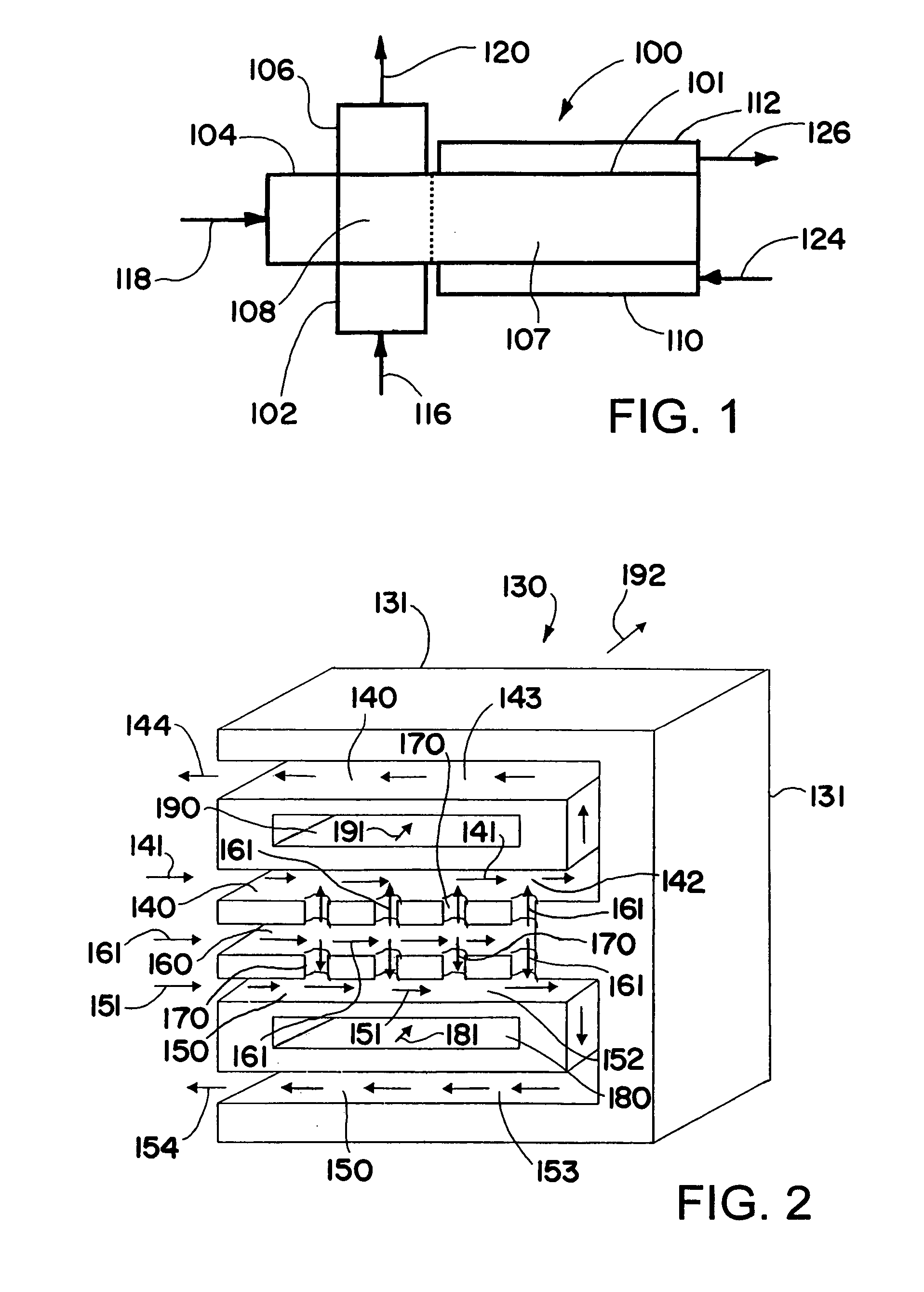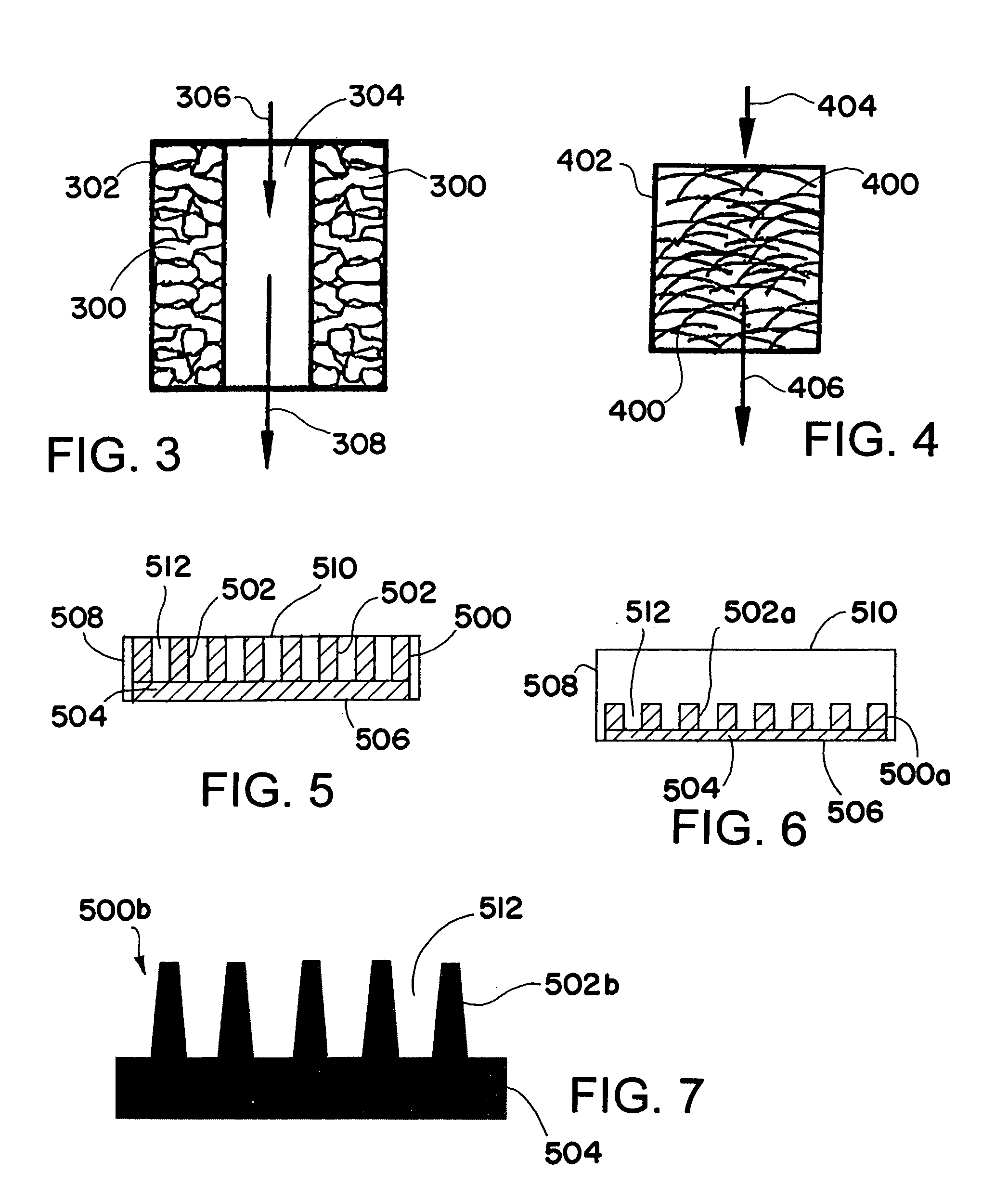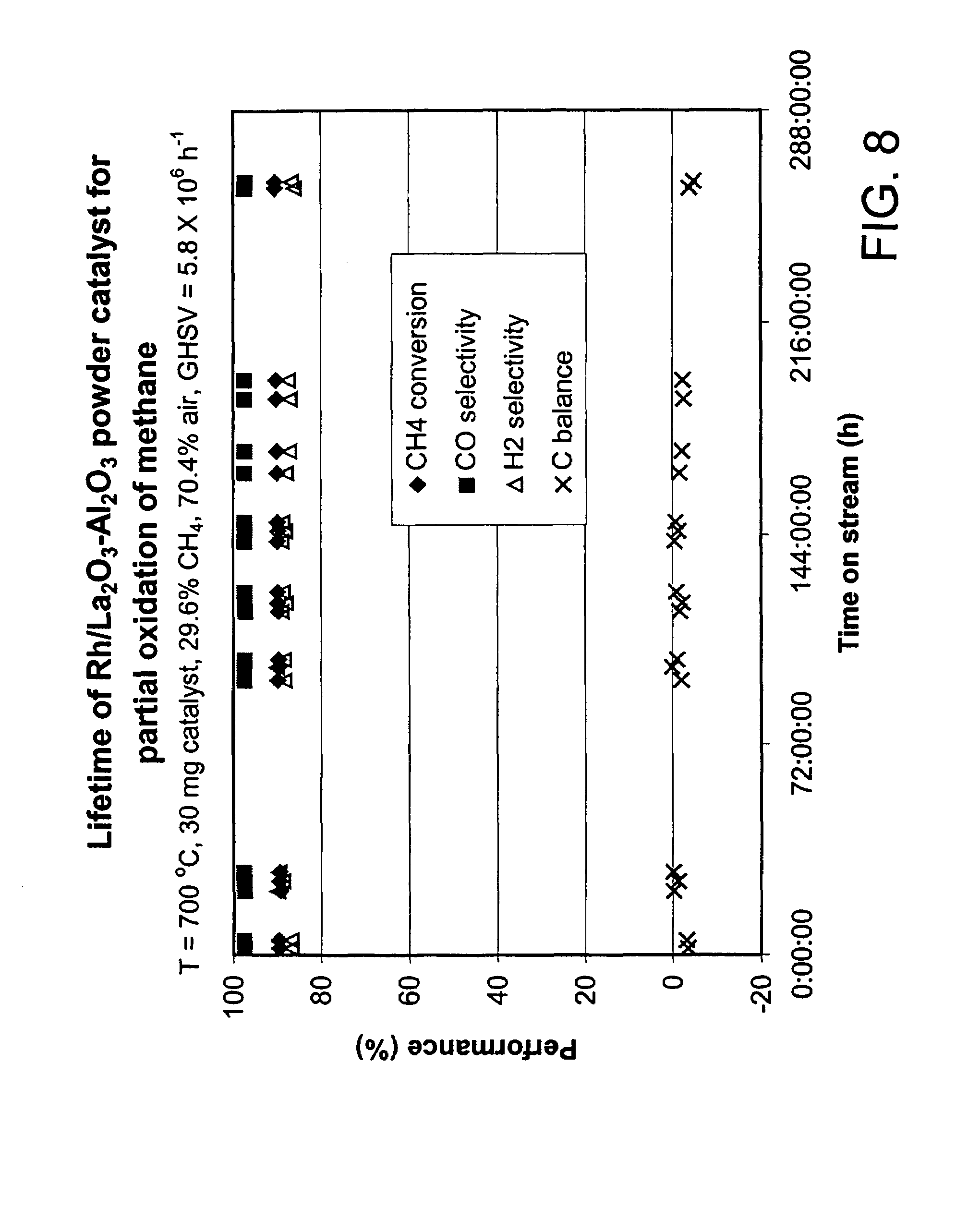Oxidation process using microchannel technology and novel catalyst useful in same
a microchannel technology and catalyst technology, applied in the direction of catalyst activation/preparation, metal/metal-oxide/metal-hydroxide catalysts, metal/metal-oxide/metal-hydroxide catalysts, etc., can solve the problem of increasing the tendency of catalyst to deactivate, difficult to achieve complete combustion of methane and higher-order hydrocarbons, and undesirable levels of carbon monoxide and carbon deposits
- Summary
- Abstract
- Description
- Claims
- Application Information
AI Technical Summary
Benefits of technology
Problems solved by technology
Method used
Image
Examples
example 1
[0130]La2O3 stabilized Al2O3 is synthesized by using a sol-gel technique as follows. 24.7 g of aluminum butoxide are dissolved into 74.5 g of 2-butanol in a beaker with constant stirring. In another beaker,4.0 g of La(NO3)3.6H2O are dissolved into 59.7 g of ethanol with constant stirring. The two solutions are mixed and stirred for 15 min. Subsequently 4.4 g of deionized H2O are added slowly into the mixture. The obtained solution is heated to 80–100° C. and kept it at this temperature for 2 hours. The alcohols are vaporized during this time. The resulting solid is dried at 120° C. overnight and calcined at 1000° C. for 24 hours in air at a heating and cooling rate of 4° C. / min. The resulting material has 22 wt. % La2O3 and 78 wt. % Al2O3. Its BET surface area and pore volume are 64 m2 / g and 0.35 cm3 / g, respectively. The solid is crushed and 88–150 microns particles are chosen as catalyst support.
[0131]Rh / La2O3—Al2O3 catalyst is prepared by incipient wetness impregnation as follows....
example 2
[0133]La2O3 stabilized Al2O3 was synthesized by a sol-gel technique as follows. 24.7 g of aluminum butoxide are dissolved into 74.5 g of 2-butanol in a beaker with stirring. In another beaker, 4.0 g of La(NO3)3.6H2O are dissolved into 59.7 g of ethanol with stirring. The two solutions are mixed and stirred for 15 min. Subsequently 4.4 g of deionized H2O are added slowly into the mixture. The obtained solution is heated to 80–100° C. and maintained at this temperature for 2 hours. The alcohols are vaporized during this time. The resulting solid is dried at 120° C. overnight and calcined at 1000° C. for 24 hours in air at a heating and cooling rate of 4° C. / min. The resulting material contains 22 wt. % La2O3 and 78 wt. % Al2O3. Its BET surface area and pore volume are 64 m2 / g and 0.35 cm3 / g, respectively. The solid is crushed and 88–150 microns particles are chosen as catalyst support.
[0134]Rh / La2O3—Al2O3 catalyst is prepared by incipient wetness impregnation as follows. 0.96 g of 10 ...
example 3
[0137]FIG. 7 shows the geometry of a fin that is useful for conducting a partial oxidation reaction process in a process microchannel. The trapezoidal shape of the fins provides mechanical rigidity at the base of fins. All the fins are supported on rectangular base to enhance heat transfer characteristics of the fin. The fin is fabricated from FeCrAlY using the Wire EDM method. The following table summarizes dimensions of the fin:
[0138]
Dimension (in)Fin thicknessAt base0.005At top0.002Fin spacingAt base0.012At top0.017Fin height0.029Rectangular base0.020heightOverall width0.180Overall Height0.049Overall length1.500
[0139]An Al2O3 slurry is prepared by mixing 7.2 g of gamma Al2O3 powder, 12 g of deionized H2O and 42 g Al2O3 beads with 3 mm diameter. The pH value is adjusted to 3.5–4 using nitric acid. The Al2O3 is acidic gamma Al2O3 which is ground to powder smaller than 150 micrometers. The mixture is ball-milled for 8 hours. 0.8 g of 25 wt. % Al2O3 sol (Sasol 14N4-25) is added to 4....
PUM
| Property | Measurement | Unit |
|---|---|---|
| temperature | aaaaa | aaaaa |
| height | aaaaa | aaaaa |
| contact time | aaaaa | aaaaa |
Abstract
Description
Claims
Application Information
 Login to View More
Login to View More - R&D
- Intellectual Property
- Life Sciences
- Materials
- Tech Scout
- Unparalleled Data Quality
- Higher Quality Content
- 60% Fewer Hallucinations
Browse by: Latest US Patents, China's latest patents, Technical Efficacy Thesaurus, Application Domain, Technology Topic, Popular Technical Reports.
© 2025 PatSnap. All rights reserved.Legal|Privacy policy|Modern Slavery Act Transparency Statement|Sitemap|About US| Contact US: help@patsnap.com



